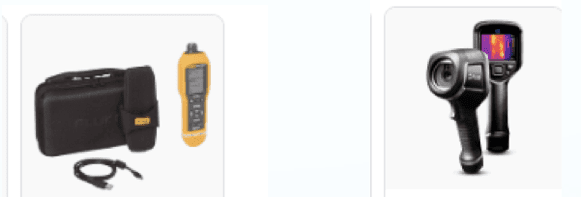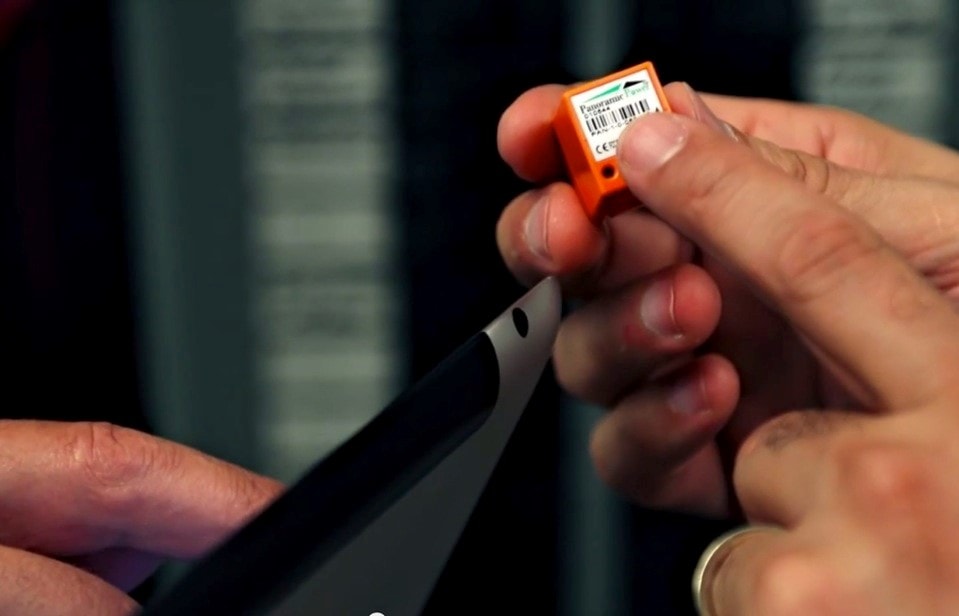Whether you are a reliability professional, maintenance technician, or operations manager, you are keenly aware of the purpose and utility of routine equipment inspections. This is a time-proven method for verifying machine health and preventing catastrophic machine failures.
Emissions & environmental reporting may also be mandated in your industry by authorities such as the EPA or DOE resulting in periodic (often weekly) meter reads requiring factory personnel to walk routes; measuring water, natural gas, and power use by specific equipment in your factory.
Of course, in the 21st century, “pedestrian” equipment inspections are inefficient if the means exist to digitize the task and provide adequate information.
Thankfully, with the ongoing availability of Industrial IoT products – utilizing sensors, smart meters, and analytics & reporting tools – much of this foot work can be eliminated.
Condition Monitoring
Two tools are used frequently on pedestrian inspection routes to detect concerns – infrared temperature guns and vibration pens. These are used to ‘quickly’ detect common problems:
- excessive vibration signals that internal workings may be wearing down, and that maintenance will soon be required, and
- temperature guns detect heat inside panels or machines, signaling that machine life is at risk or worse, a potential safety or production hazard exists.
These tools have a place in every significant manufacturing environment.
With the implementation of continuous monitoring schemes, however, route frequencies may be reduced, and, with meaningful telemetry, remote diagnosis can help technicians predetermine (or rule out) certain failure modes with the use of events/alerts.
Continuous Energy Monitoring – An Easier Way?
Today, wireless, self-powered energy sensors that combine a transmitter with a current transformer (CT) offer an extremely practical way to get digital data from a device. Sensors deliver a near constant stream of energy readings. Trending reports and alerts can be set -up easily across machines, systems, and processes.
Can this technology be useful for reducing the frequency of pedestrian inspection routes in your facilities?
The beauty of this technology is that new measuring points are installed in minutes and deliver data immediately. Reports and alerts can be added same day, and so time-to-value is immediate.
Here are some of the most important and immediate benefits:
1. Protect Remote, Out of the Way Equipment Critical equipment and bad actors seem to be anywhere but near the lunchroom – sometimes on the roof, across the street in the mill, in the basement, even outside of the building. Since the equipment is located in low traffic areas, it is almost never convenient to inspect.
Place continuous current sensors here first. You will be able to detect and measure phase imbalance on major systems, and this is a common cause for excessive heat in distribution panels (loose connections). Weekly reports to your inbox will tell you in a few seconds if you have any pressing concerns needing a closer look.
2. Predict Machine/Component Failure Planning maintenance based on walk-up machine-hour meters is inefficient and depends on diligence and focus on the inspection program. By targeting critical equipment where high-frequency inspection is prudent, it is easy to replace this “sneakers and clipboard” approach with monthly reports that track machine on-time using continuous current measures. Adding an alert may help remind operators to perform basic maintenance as well.
3. Avoid Shortened Motor Life High frequency starts cause more than one problem for a motor – on one hand, you may end up with a failed switch/actuator, and that is an aggravation. Moreover, frequent starts will also accelerate wear on motors, resulting in reduced life. And finally, machine stops signal potential productivity losses (gains). This can signal opportunities to train operators, and even allow operators to “gamify” shifts by counting starts required to perform work.
4. Automatically Detect Unusual Wear Patterns While you are continuously measuring a motor to detect phase imbalance, or to count starts, an added benefit is to trend operating amps over time and identify machines that are using more energy to do the same work. Our customers like to be notified by way of a report that highlights 10% increases in motor load during a 6 month observation window to signal maintenance need as inner workings of motors and machinery exhibit wear.
Toss the Clipboards Once you have established a successful foundation for continuous current monitoring, you may want to also start acquiring your natural gas and water meters.
#reliability #conditionmonitoring #predictivemaintenance #connectedfactory #reliabilityengineering #lce
About Sitewatch
Sitewatch IoT is an energy monitoring platform that utilizes wireless self-powered sensors to continuously communicate current data from unlimited devices in a factory to a cloud reporting platform. The above use cases represent years of study and real-world application. Successful application in rigorous factory environments is very common and failed installations just don’t happen. In place, the sensors last for years and years and don’t need batteries.



